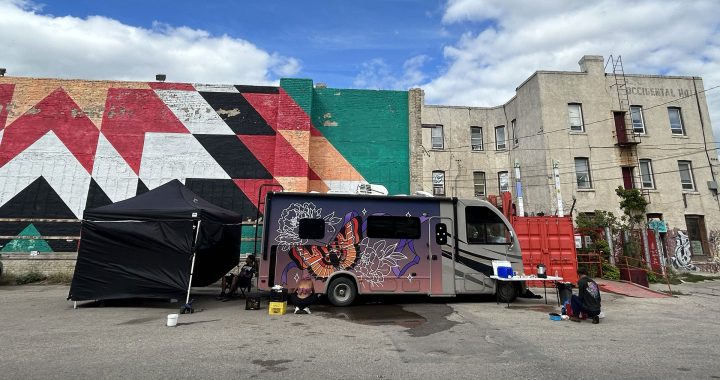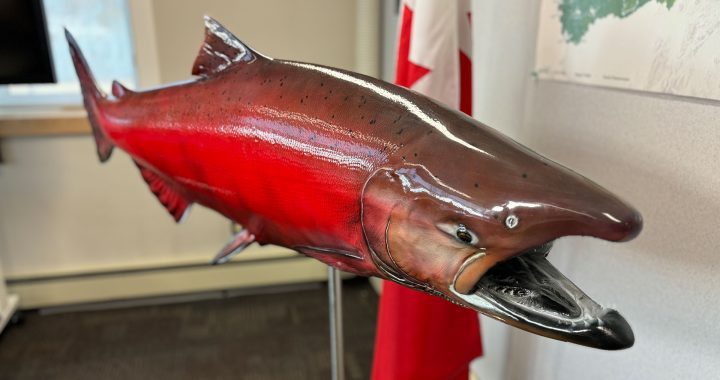(Tuqiqki Osuitok, right, with his late father Osuitok Ipeelee, whose carvings are part of the National Gallery of Canada collection.)
Kenneth Jackson
APTN National News
OTTAWA –Tuqiqki Osuitok’s eyes can just be seen under the brim of his red hat as he looks up at people walking by, hoping they’ll drop some coins in his open hands.
He’s sitting on the sidewalk along Sussex Drive near Rideau, in downtown Ottawa, and just down the street from where hundreds of residential school survivors gather at the Truth and Reconciliation Commission ceremonies.
Osuitok isn’t going, but he’s one of them.
“Most of us have same stories. We went through hell,” says the 62-year-old Inuk man, and son of the late prominent carver Osuitok Ipeelee.
Ipeelee’s carvings are part of the National Gallery of Canada collection.
“He was my best friend,” says Osuitok, also a carver.
He says he was put in a residential school in Cape Dorset in the late 1950s.
They were called “federal hostels” in Nunavut.
“I was six and it was very hard,” he recalls. “They (teachers) spoke in English and you weren’t allowed to speak in your mother tongue.”
He said he suffered abuse at the hands of the teachers, physical and sexual.
The legacy of residential schools was kept quiet for generations. But over the last few decades the effect they’ve had on First Nation, Metis and Inuit people has become public.
Osuitok may be a prime example – tormented to this day he suffers from the memories.
“Sometimes I get flashbacks. Nothing you can do really except try to stay calm,” he says. “You get lots of anger towards the white people.”
He’s hit the bottle hard and has found himself in Ottawa, on and off, for the last 42 years.
Many times on the streets or in shelters.
“It really kills your life. You don’t want to do anything after,” he said.
He remembers wanting to be a doctor or a police man as a young child.
“The dream never came true. I had too much damage,” he said.
He’s been in trouble with the law, another effect of residential schools – something the Supreme Court of Canada has confirmed attributes to the high number of Aboriginal people before the courts.
“Anything serious?”
He nods. “Yes, bad, bad stuff.”
“Murder?”
He shakes his head.
“Sex crimes?”
“Yes, sexual assaults,” he says – his eyes now red and welling up.
A victim himself, Osuitok says he was sexually assaulted between the ages of 12-14 at the school.
“The woman teacher sexually abused me,” he says.
He said his sister and brother also attended the school. They’re both deceased now he says. His sister drowned and his brother committed suicide.
He can’t stay any longer and needs to get to the Ottawa Mission shelter to get medical treatment.
Years of drinking have given him ulcers.
And the little man in a red hat walks across Rideau street carrying with him the living legacy of residential schools.










No doubt his story is true. SO many tragic stories from the residential school system. It has affected so many generations.